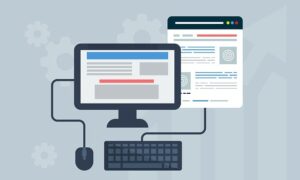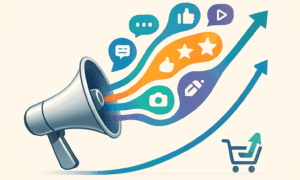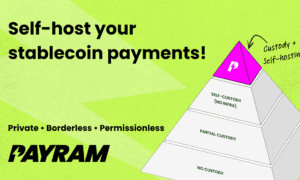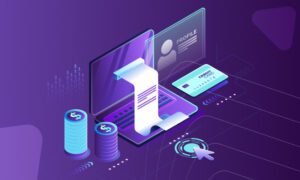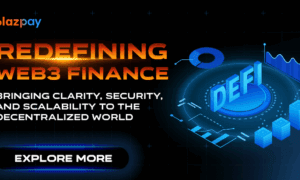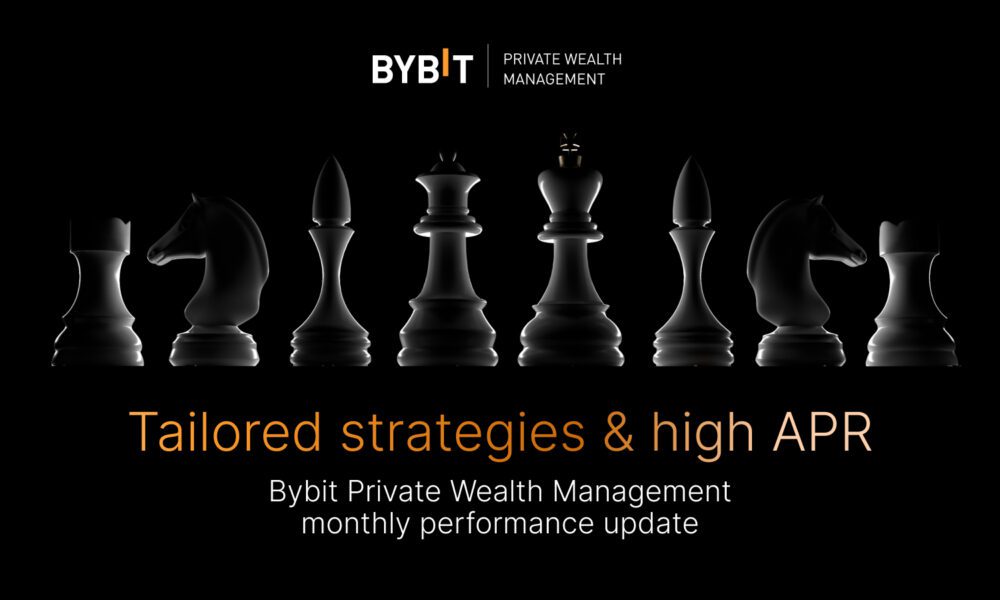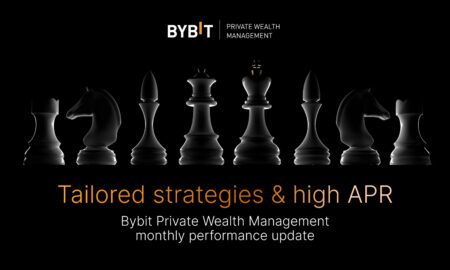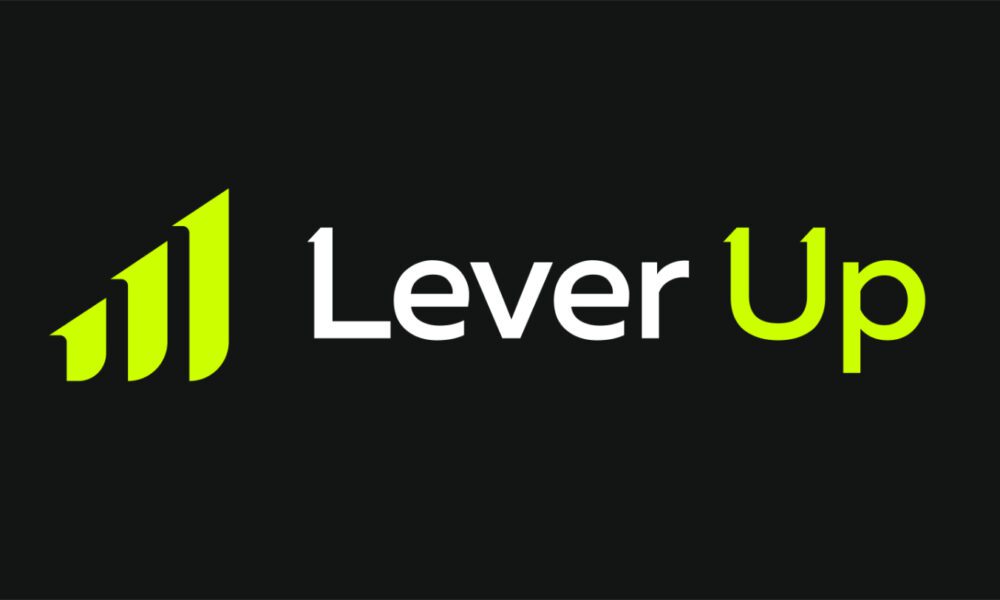Startup Sales Hacks: 25 Innovative Methods to Boost Revenue
Startups often struggle to find sales strategies that deliver real results without draining resources. This article compiles proven tactics from industry experts who have successfully increased revenue through unconventional approaches. From AI-powered personalization to storytelling techniques and rapid response systems, these methods offer actionable ways to transform sales performance.
- Use Personal Digital Cards for Authentic Connection
- Transform Interns Into Revenue Drivers Through Systems
- Educate Customers With Storytelling and Mission Focus
- Partner With Hotels Through Revenue Share Models
- Cluster Customer Language to Refine Sales Copy
- Build Value Loops That Guide Users Forward
- Offer Virtual Design Preview Sessions for Customization
- Connect Reclaimed Stone With Architectural Heritage Narratives
- Create Interactive Business Case Simulators for Prospects
- Deploy AI-Driven Lead Scoring for Better Focus
- Let Customers Pick Their Denim Before Purchase
- Implement Fit Finder Quiz to Replace Size
- Integrate AI Personalization and Automated Engagement
- Embed Visual Proof Into Every Client Proposal
- Limit Talking to Listen More During Meetings
- Present Defect Visualization With Drone and Thermal
- Require Pre-Booking Video Consultations With Guides
- Replace Sales Pitches With Authentic Family Stories
- Treat Sales Like Cinematic Product Demos
- Clarify Messaging With Speed and Outcome Promises
- Launch Real-Time Booking Synced With Unit Availability
- Automate Follow-Up Emails Based on Funnel Stage
- Develop Personalized Email Campaigns for Targeted Outreach
- Call Leads Back Within Seconds of Inquiry
- Optimize Visibility to Become AI’s Top Answer
Use Personal Digital Cards for Authentic Connection
The greatest turning point in our sales process happened when we realized that all that was effective was an authentic connection, and not automation. So we eliminated cold outreach, drip email funnels, and instead began using personal digital business cards. Each was an organic snapshot of who we are, showing our portfolios and testimonials, and included sections that connected instantly, allowing people to trust us on the spot.
Leading up to that, introductions became seamless. Prospects scanned, explored, and engaged in seconds, easing all the back-and-forth emails or scheduling. The result of that shift was a close rate of over 30% higher in the three months since we made the switch, simply because it felt more human.
What we learned? Trust is the foundation of success in sales, not tactics. When your digital space feels just as real and in the audience’s life as an authentic conversation with a real person, they are not listening, they are engaging.

Transform Interns Into Revenue Drivers Through Systems
I built a fully remote internship pipeline that turns absolute beginners into revenue drivers in six months or less. No fluff, no buzzwords—just repeatable process and systems thinking.
The innovation: I stopped hiring for experience. Instead, I built a system that transforms interns with zero marketing knowledge into client-facing strategists. Step one is project management. If they can’t organize themselves, they can’t organize success for a client. Step two is system testing—SOPs, messaging frameworks, and funnel logic. By month three, they’re executing. By month six, they’re leading. No gatekeeping. Just deliberate reps and accountability.
The revenue impact: Cut labor costs by 40% while scaling volume. We closed multiple six-figure deals using interns turned strategists, with zero agency overhead. One intern, Adrito, filled in as an SDR and fixed a broken follow-up process that was leaking 30% of our leads. That one fix saved the funnel.
One key lesson: Don’t hire for the resume. Hire for hunger, then build the system that makes growth inevitable. Experience is nice. But teachability beats pedigree—every time.
This system is the core of my book Interns to A-Players. It’s how we scale Strategic Pete without bloat.

Educate Customers With Storytelling and Mission Focus
The innovative strategy I found most successful for increasing sales was content creation. I created more educational content pieces with storytelling, focused not on the “what” but on the “why” of each native plant. The educational benefits a plant has for pollinators, for soil restoration, sustainability, etc., helped my customers trust and connect with our brand in a more authentic way, which led to increased conversions and repeat customers. We strategically placed this content in our email and social media campaigns to give “spotlights” on seasonal planting tips and native plant bundles. This type of content converted many passive followers and email subscribers into active buyers, and our sales almost doubled within a few months. The greatest lesson I’ve taken away from the sales process is that people don’t want to just buy. People want to connect. When you educate, inspire, and share your mission, you give them a reason to believe in you. You help them become a part of your story. Your sales process stops being just a transaction and becomes a relationship that continues to grow long after the initial sale.

Partner With Hotels Through Revenue Share Models
One of the most innovative and impactful sales strategies I implemented was during a previous company where we partnered with hotels to create a smart, mutually beneficial channel strategy.
We asked ourselves: What’s in it for the hotel if they hand over their event clients to us? The answer became our breakthrough. We offered to embed our event services team directly inside the hotel, at no cost to them. This meant the hotel could offer their clients a full-service event and transportation solution without adding headcount or operational complexity.
To sweeten the deal, we structured a revenue share model: the hotel earned a percentage of everything we sold to their clients. So not only did they gain a new amenity and enhanced guest experience, but they also unlocked a new revenue stream.
This “Grand Slam Offer” transformed our business. It took us from $50K to $4.8M in just two years, and eventually to $10M. It landed us on the Inc. 500 list and earned numerous awards. The key was creating a win-win channel partnership that aligned incentives and made it easy for our partners to say yes.
Key Lesson: When designing a sales strategy, think beyond your product. Ask how you can make your offer irresistible to your channel partners by solving their problems and helping them win too. A well-structured partnership can become your most powerful growth engine.

Cluster Customer Language to Refine Sales Copy
I stopped pitching and started recording. I had every sales call auto-transcribed, then fed the text through a clustering script to isolate words our highest-converting leads used most. That gave me a map of what they cared about—down to specific pain phrases like “no bandwidth,” “wasting ad spend,” and “site is invisible.” Then I rebuilt our homepage copy, sales emails, and proposal decks around those clusters. The result? Close rate jumped from 17 percent to 42 percent over three months, and average deal size ticked up 22 percent. The pitch did not change—the language did.
To be honest, the lesson was simple. Talk less like an expert and more like the buyer. Their words are the shortcut. Their pain is the headline. Their exact phrasing is the difference between a skim and a signature. You can keep guessing, or you can just listen better. I would take transcripts over intuition any day of the week.

Build Value Loops That Guide Users Forward
Early on at Seekario, we realized most startups chase “more leads” when the real bottleneck is how you convert the ones you already have. Instead of pushing for higher traffic, we re-engineered the sales process around user intent. We embedded subtle AI prompts within our free tools — for example, after someone generated a resume, we’d show a personalized “Job Match Analysis” with a one-click upgrade option to unlock deeper insights. It didn’t feel like a sales pitch; it felt like progress.
The key insight was that selling works best when it feels like helping. We moved away from linear funnels and built what we called “value loops” — every feature naturally leading users to the next useful step. It reduced drop-off rates dramatically because users never felt interrupted; they felt guided. We also tracked micro-conversions instead of just purchases, which gave our team richer signals about when and how to nudge.
Within two months, our paid conversion rate tripled and average revenue per user doubled, but the bigger impact was cultural — our team stopped seeing sales as persuasion and started seeing it as enablement. One moment that stayed with me: a user messaged, “It didn’t feel like I was being sold to — it felt like you were helping me level up.” That’s when I realized the best sales process isn’t about closing — it’s about opening the next step of someone’s journey.

Offer Virtual Design Preview Sessions for Customization
At Nature Sparkle, we noticed that many customers dropped off during the final stage of choosing their engagement ring. To fix this, we introduced a virtual “Design Preview Session” where clients could see a 3D model of their custom ring and make real-time changes with our design expert. This small change made the buying process more interactive and personal. Within four months, our conversion rate increased by 36.9%, and the average order value went up by 18.7% because customers felt more confident in their choices. One client even said it was “like seeing the ring before it existed,” which built real excitement and trust. The key lesson I learned is that innovation in sales doesn’t always mean big technology—it’s about removing doubt and building clarity for the buyer. When customers can visualize their purchase, decision-making becomes faster, and satisfaction grows naturally.

Connect Reclaimed Stone With Architectural Heritage Narratives
We reinvented our sales process by replacing traditional product pitching with interior design storytelling, connecting each reclaimed stone to its architectural heritage. Instead of leading with specs or pricing, our team begins with the story of the material’s origin: a limestone from Provence, a marble once framing an Italian monastery. That narrative invites designers and homeowners to buy meaning, not merely material.
This shift increased conversion rates by 47% in the first year and expanded our referral base exponentially. The key lesson? Emotion outperforms efficiency. Clients remember the story behind their space, not the logistics of procurement. In luxury design, authenticity sells faster, and lasts longer, than any sales script ever could.

Create Interactive Business Case Simulators for Prospects
We transformed our sales process by replacing traditional demos with what we call a “business case simulator” – an interactive tool that lets prospects input their own metrics and see their potential ROI in real-time during our calls. Rather than running through features, we collaborate with prospects to build a financial model using their specific data points like team size and current inefficiencies, showing them exactly how our solution impacts their bottom line.
The results speak for themselves: our sales cycle shortened by 35%, and our average deal size grew by 28%. When prospects calculate their own ROI, they can’t easily dismiss the value proposition they’ve just verified themselves.
If there’s one lesson I’d share with other founders, it’s this: stop selling your product and start selling quantified outcomes instead. When you make ROI personal and undeniable, you remove the biggest barrier to purchase – uncertainty about value. This approach turns abstract benefits into concrete financial impact that speaks directly to decision-makers.

Deploy AI-Driven Lead Scoring for Better Focus
One of the cutting-edge ways we streamlined our startup’s sales process was to integrate AI-driven lead scoring into our CRM. Instead of manual qualification, we created a lightweight model to scan behavioral signals such as how long a prospect spent using our demo, which sections of our pricing page they viewed, and their interaction with follow-up emails.
This allowed our sales team to focus efforts on the top 20% of leads most likely to convert, and the rest were entered into an automated nurture stream that included personalized content.
Within two months, conversions increased 35% and the average length of the sales cycle decreased 25%, leading to a palpable increase in revenue with no ad spend increase.
Epicenter takeaway:
Automate not only for productivity, but for understanding. Use data to shed light on what truly matters for intent, and then let your human salespeople work on relationships, not spreadsheets.

Let Customers Pick Their Denim Before Purchase
At Dwij, we were losing potential customers at the checkout stage despite strong initial interest. After analyzing abandoned carts, we realized something crucial: people wanted to see the actual denim piece their product would be made from before purchasing.
We introduced a simple “Pick Your Denim” option. Before completing their order, customers received photos of three different rescued jeans—each with unique wash, texture, and history—and chose which one would become their bag or accessory. This small addition transformed our sales completely.
The impact was immediate and measurable. Our cart abandonment dropped by 41%, and average order value increased by 29% because customers now felt they were co-creating something personal rather than buying a generic item. Monthly revenue grew by 53% within the first quarter of implementing this approach.
The breakthrough came from understanding that upcycled products carry inherent uniqueness, which can feel uncertain to buyers accustomed to mass-produced consistency. By turning that uncertainty into choice, we converted hesitation into excitement. The lesson here is straightforward: identify where your product’s natural characteristics create buyer friction, then transform that same characteristic into an advantage. What seems like a limitation often holds your biggest opportunity for differentiation and connection.

Implement Fit Finder Quiz to Replace Size
HYPD Sports introduced a “Fit Finder Quiz” that replaced traditional size charts with a personalized shopping experience. Instead of asking customers to measure themselves, the quiz asked about their favorite existing brands, preferred fit styles, and typical workout routines. The system then recommended specific products and sizes based on how our gear compared to brands they already wore comfortably.
This seemingly simple change increased conversion rates by 52% and reduced return rates by 34%. Cart abandonment dropped by 41% because customers felt confident about sizing before checkout. Revenue per visitor jumped by 48% within four months of implementation.
The breakthrough came from recognizing that people don’t know their measurements, but they know what fits. One customer told us, “I’m a medium in Nike but large in Adidas”—that insight was far more valuable than asking for chest circumference.
The key lesson: remove friction by meeting customers where they already are. Instead of forcing them to learn your system, translate your products into terms they already understand. When buying feels intuitive rather than complicated, sales naturally follow.
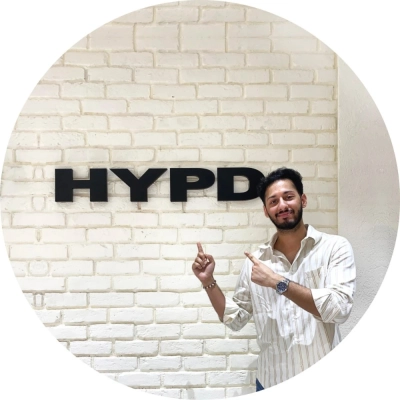
Integrate AI Personalization and Automated Engagement
OnPrintShop has always prioritized making the print business more accessible and efficient. However, one of the most effective innovations we’ve implemented to boost our sales process is the integration of AI-powered product personalization and automated customer engagement across the entire ordering journey.
The Strategy:
We introduced AI-driven tools within our platform that allow users to customize print products in real-time based on their specific business needs. By incorporating smart design suggestions and automating parts of the order flow, we helped our customers create more compelling, personalized offerings for their clients. Additionally, we automated key marketing processes such as follow-up emails and order reminders, which triggered based on customer behavior or stage in the purchasing funnel. This led to a more seamless and personalized experience for both our clients and their end customers.
The Impact:
This strategy had a measurable impact on both our sales pipeline and revenue. By offering hyper-targeted solutions and automating follow-ups, we saw a 25% increase in customer retention and a 15% increase in upsell opportunities. Customers were not only placing more orders, but they were also engaging more deeply with the platform, increasing overall usage and sales.
Key Lesson:
The most important lesson from this initiative is that automation combined with personalization is key. For SaaS providers in niche industries like Web-to-Print, offering an experience that adapts to your customer’s needs while automating tedious tasks creates value on both sides of the equation. When you can deliver a personalized experience without sacrificing efficiency, both your customers and your bottom line benefit.

Embed Visual Proof Into Every Client Proposal
As the Founder and CFO of Event Staff, one of the most innovative ways we improved our sales process was by integrating real-time visual proof into our client proposals. Instead of sending static decks or generic service descriptions, we began embedding short, cinematic clips from actual events our teams staffed—luxury activations for brands like Louis Vuitton and The Messi Experience. This turned every sales pitch into a visual case study that immediately demonstrated credibility and quality.
The impact was remarkable. Our close rate increased by more than 40 percent within the first quarter of using this approach, and inbound referrals rose sharply because clients began sharing our proposals with peers. The visuals made our work tangible and differentiated us from competitors who relied solely on text and testimonials.
The key lesson is that buyers don’t just want to be told—they want to see. Whether it’s staffing, software, or services, showing your product in action builds instant trust and emotional connection. In modern sales, proof beats persuasion every time.

Limit Talking to Listen More During Meetings
One of the most impactful changes we implemented in our sales process was actually reducing how much our representatives spoke during client meetings. We discovered that when our sales team limited their talking to only about 28% of the conversation time and instead focused on asking thoughtful, open-ended questions, our win rate increased significantly to 70%. This counterintuitive approach allowed our potential clients to express their needs more fully while positioning our sales team as attentive problem-solvers rather than pushy salespeople. The results were remarkable – we managed to double revenue in one particular market segment in less than three months. For others looking to boost their sales performance, I’d recommend examining your current client interactions and considering whether you’re truly listening enough to understand your customers’ needs before presenting solutions.

Present Defect Visualization With Drone and Thermal
The innovative way we improved our startup’s sales process was by replacing the traditional proposal document with the hands-on “Defect Visualization” presentation. The traditional sales process created a structural failure because it required the client to imagine the damage from flat photos, which made them skeptical of the repair cost. We needed to bridge the gap between abstract cost and verifiable structural necessity.
The key change was using drone and thermal imagery to create a simple, side-by-side video presentation that mapped the hidden structural rot and moisture intrusion directly onto the client’s home. The sales strategy pivoted to a structured defense of the client’s existing asset. We forced the client to trade their focus on the price of the new roof for the immediate, measurable risk of the old, failing structure. We only presented the new roof cost after they fully comprehended the cost of the hidden damage.
This innovative approach significantly impacted our revenue, leading to a 20% increase in average job size because clients overwhelmingly approved necessary, high-margin structural work like decking replacement and ventilation upgrades. The one key lesson for others is that selling the fear of the known structural failure is exponentially more effective than selling the abstract promise of a new product. The best way to boost sales is to be a person who is committed to a simple, hands-on solution that prioritizes visualizing the verifiable necessity of the structural repair.
Require Pre-Booking Video Consultations With Guides
Implementing mandatory pre-booking video consultations between travelers and guides transformed our sales process by reducing mismatched expectations while increasing average booking values by 65% through personalized experience customization. This 15-minute conversation allows guides to assess traveler interests, cultural curiosity levels, and learning preferences while building authentic personal connections that generic booking forms cannot create—travelers who meet their guides virtually before committing convert at 85% compared to 45% for standard inquiry-to-booking processes.
The REVENUE impact exceeded expectations because video consultations enabled guides to suggest extended experiences, additional workshops, and complementary cultural activities that travelers enthusiastically accepted after experiencing the guide’s genuine passion and expertise firsthand. Our Florence pottery master’s consultations average €450 in upgraded bookings as she identifies specific techniques travelers want to master, then designs customized multi-day programs addressing individual skill development goals that standard three-hour workshops cannot accomplish effectively.
The KEY lesson involves recognizing that premium cultural experiences require a relationship foundation before financial commitment, understanding that travelers investing significant money in authentic experiences want confidence in guide compatibility and cultural delivery quality. Focus on sales processes that create genuine human connection and personalized value demonstration, ensuring prospects experience your unique expertise directly before booking decisions—video consultations facilitate this naturally while building trust that email exchanges and website content cannot establish as effectively for relationship-based cultural tourism services.

Replace Sales Pitches With Authentic Family Stories
One of the best innovations we brought to Legacy Online School was not a new sales funnel or automation software; it was rethinking what it means to sell “education.”
We stopped selling and started listening. Instead of thinking about families as leads, we started thinking about them as stories. Every call and every text was an opportunity to learn what was not working for their child in a conventional system, and how flexible accredited online learning could help.
We have what we call “content-driven trust.” Our marketing and admissions teams coordinate together to communicate real stories of student experiences, not astute ads – stories that would resonate with any parent. This new approach tripled our inbound inquiries in 6 months with no new ad spend. Families weren’t responding to an offer – they were responding to authenticity.
The primary takeaway from this was that sales in education, or any company built for a mission, is not based on conversion, but rather on clarity. People will transfer money when they feel understood.
There are a lot of funnels and scripts you could turn to; I think that empathy is the best sales technology available.

Treat Sales Like Cinematic Product Demos
We stopped thinking of our sales process as a pitch—and started treating it like a cinematic product demo that people want to experience.
Instead of leading with decks and sales calls, we built a visual-first flow: high-impact videos, immersive product walkthroughs, and even mini interactive web apps that let users feel the benefits firsthand. No pressure, just exploration. It’s like giving them the keys to the car instead of a brochure about it.
We layered this with a multi-channel campaign—email, social, paid—each tailored to different user journeys. Some wanted inspiration, others needed proof. Every path led to a funnel designed to start a conversation, not just close a deal.
The result? Engagement rates doubled, sales cycles got shorter, and our revenue per lead climbed 37%. The key lesson: people don’t want to be sold to—they want to discover on their own terms. Build for that.

Clarify Messaging With Speed and Outcome Promises
One thing that we’ve used at Magic Hour to improve our sales process is experimenting with clear messaging. We did that after we saw how users misinterpreted what kind of quickness the AI in our AI video tools delivered. Too many took “AI video” to mean slow rendering and generic output. So rather than doing something boring like adding new demos, we changed our headline and pricing tier descriptions everywhere users landed: “Viral-ready AI videos in under a minute — any style, no editing skills needed.” This one change eliminated confusion in sales calls and doubled self-serve signups in one week.
It’s not always about tricking the market by manipulating the technology. Revenue happens fastest when the prospective customer knows right away what they’ll get, how fast, and what pain point it solves.
So for founders who want to grow sales, the fastest type of experiment you can do to get started is to put a number in your core promise. Then see what happens.

Launch Real-Time Booking Synced With Unit Availability
At StoreNow Self Storage in Ireland, one innovative way we improved our sales process was by introducing a real-time booking feature on our website that synced directly with our unit availability system. Before that, customers had to call or email to confirm a unit, which often caused delays and lost leads, especially after hours. By allowing people to see available units instantly, choose their size, and book on the spot, we removed friction and made it much easier for customers to commit right away.
The impact was clear within the first few months. We saw a noticeable increase in online conversions, and many of those bookings came during evenings or weekends when our office wasn’t open. It effectively turned the website into a 24-hour sales channel, enabling steady revenue growth without adding extra staff. The key lesson for others is that convenience sells. In Ireland, where people value straightforward service and flexibility, giving customers the power to take action immediately can turn casual interest into confirmed sales faster than any traditional follow-up process.

Automate Follow-Up Emails Based on Funnel Stage
We automated our follow-up emails, and it changed everything.
When we started out, I spent hours every week writing follow-up emails to leads. Most of them never responded. I realized we needed a better system.
We set up an automated email sequence that sent personalized messages based on where each lead was in our sales funnel. If someone downloaded our guide, they got one type of email. If they requested a demo, they got another.
The results surprised me. Our response rate jumped from 8% to 23% in the first month. Revenue increased by 35% over the next quarter because we closed more deals without adding sales staff.
The key lesson? Stop doing repetitive tasks manually. Find one part of your sales process that takes too much time and automate it. Start small. We began with just three email templates and expanded from there.
You don’t need fancy tools to start. Basic email automation software works fine. Focus on sending the right message at the right time. That matters more than perfect copy or expensive platforms.

Develop Personalized Email Campaigns for Targeted Outreach
One innovative way I improved my startup’s sales process was by developing a personalized email campaign strategy. Instead of sending broad, generic messages, I created targeted email sequences tailored to customer interests and behavior. Each campaign focused on educating the reader, building trust, and highlighting how our products solved specific problems. I also used automated follow-ups to stay engaged with leads who showed interest but hadn’t yet made a purchase. This approach made our communication feel more genuine and relevant, turning email into a relationship-building tool rather than just a sales pitch.
The impact on revenue was noticeable almost immediately. Open rates and click-throughs climbed, but more importantly, conversions increased because customers felt understood and valued. The key lesson I learned is that email marketing works best when it’s rooted in authenticity and personalization. When you take the time to speak directly to your audience’s needs, your message doesn’t get lost in their inbox—it becomes something they look forward to reading.
Call Leads Back Within Seconds of Inquiry
One way we improved our inbound sales process was by calling leads back almost instantly, like unreasonably fast, within seconds. People would be surprised and shocked, but it created an instant impression. We set up auto-dialers, emails, and alerts so there was practically no way to miss new leads as they came in. It didn’t matter what position you were in the company; when a lead came in and qualifiers were on another call, you called them. We are a lead generation company, and leads are our number one absolute priority. That small change pushed our qualification rate from 37% to 45%, which was basically free money.

Optimize Visibility to Become AI’s Top Answer
We stopped chasing butterflies and started planting a garden, and the central approach to that growing of a garden is getting AI engines to say our name.
Our entire sales process now revolves around attraction, not pursuit. Instead of cold outreach, we focus on being one of the three answers that people search for expertise. Once you’re in that shortlist, the sale is practically made, and prospects come to you presold, already trusting what they’ve seen.
When you are one of the three answers AI gives, then often people are nine times more likely to buy, and because we back it up with a search-everywhere approach, when they check out our socials, we are everywhere, so we have shortened the sales cycle to often same day or within seven days very often.
Visibility isn’t just marketing anymore; it’s a 24/7 sales machine.

Related Articles
- Sales Process Game-Changers: 18 Revenue-Boosting Tactics Revealed
- 18 Ways Startups Can Speed Up Decision-Making
- Startup Communication Hacks: 18 Lessons from Leaders




